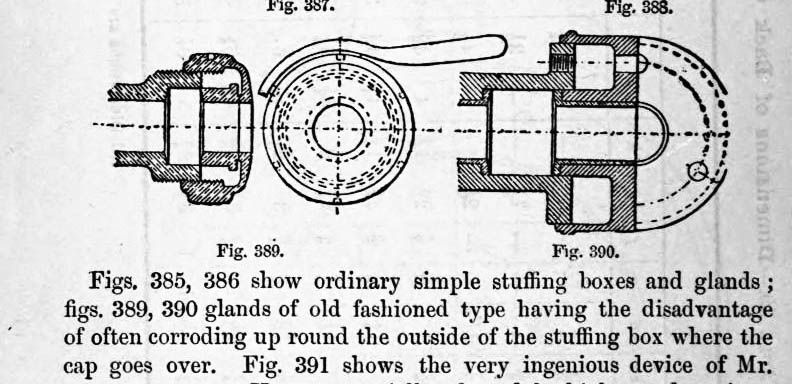Runner
Well-Known Member
- Joined
- Feb 10, 2011
- Messages
- 124
- Reaction score
- 17
Hi all,
I have a problem making the gland boss and nut for the cylinders and valve chests. The problem appears to be getting the threads for gland boss and nut perfectly aligned and concentric. This error manifest itself by being unable to position the nut at all settings without having the piston rod or valve rod bind in the gland. I have tried to overcome this by reaming the hole for the rod in the cylinder cover or valve chest with the nut assembled, but as expected this only works for the one position of the nut that reaming occurred. Since I cannot predict the position of the gland nut due to the amount of the gland packing installed I have had to open the hole in the gland nut with a small round file to so that it can be set at any position without the piston or valve rod binding.
I have reconciled this opening of the gland nut by telling myself that if the gland material does its stuff then a small increase in gap between the rod and gland nut isn't going to affect the performance of the steam engine. However, perusing the WIP section it appears that when these parts are being manufactured as to be so straightforward not to receive any particular mention.
Is there any steps or setups that I can use for future manufacture to ensure that these parts are made without the need for opening the gland nut hole?
Thanks in advance,
Brian
I have a problem making the gland boss and nut for the cylinders and valve chests. The problem appears to be getting the threads for gland boss and nut perfectly aligned and concentric. This error manifest itself by being unable to position the nut at all settings without having the piston rod or valve rod bind in the gland. I have tried to overcome this by reaming the hole for the rod in the cylinder cover or valve chest with the nut assembled, but as expected this only works for the one position of the nut that reaming occurred. Since I cannot predict the position of the gland nut due to the amount of the gland packing installed I have had to open the hole in the gland nut with a small round file to so that it can be set at any position without the piston or valve rod binding.
I have reconciled this opening of the gland nut by telling myself that if the gland material does its stuff then a small increase in gap between the rod and gland nut isn't going to affect the performance of the steam engine. However, perusing the WIP section it appears that when these parts are being manufactured as to be so straightforward not to receive any particular mention.
Is there any steps or setups that I can use for future manufacture to ensure that these parts are made without the need for opening the gland nut hole?
Thanks in advance,
Brian





